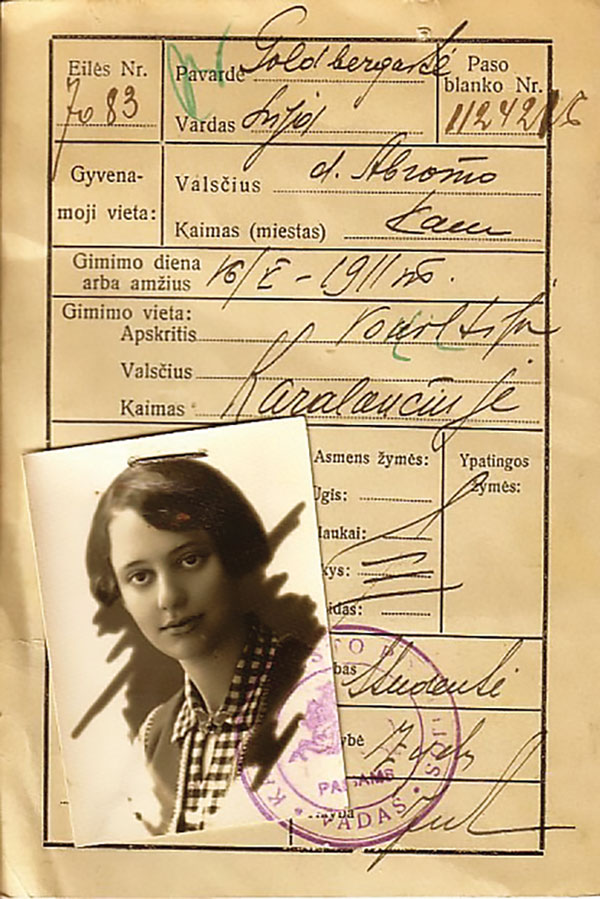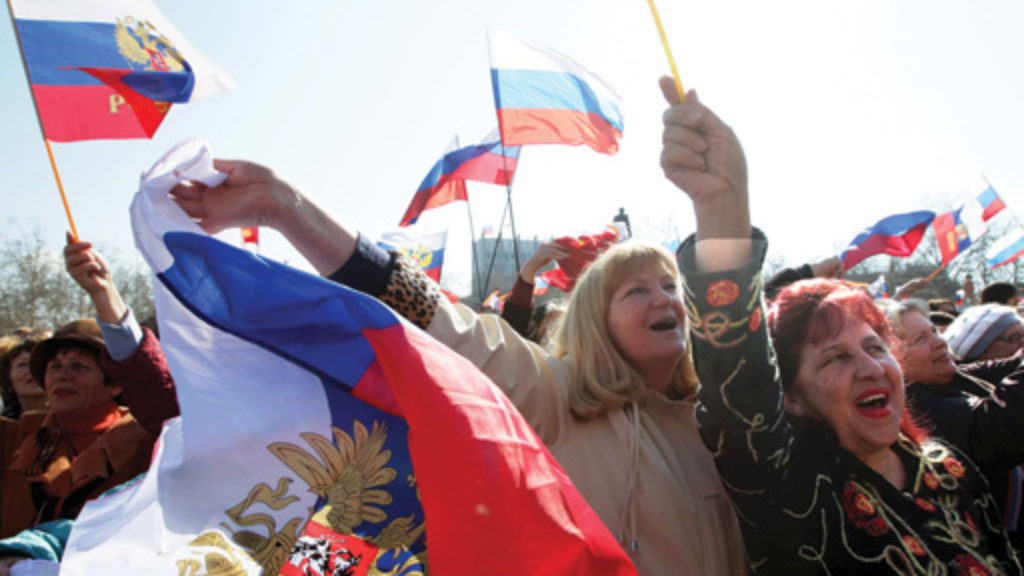Like an Echo of Silence
In an evocative late poem called “Answer” (“Teshuvah”), the Hebrew poet Lea Goldberg wrote:
To the exam question “For what purpose
are lyric poems written in our era?”
And what would we do with the horses in the twentieth century?
And with the does?
And with the large stones
in the Jerusalem hills?
The poem, which appears in English in the newly released bilingual On the Surface of Silence, translated by Rachel Tzvia Back, offers no grand claims. Lyric poems, it says, are part of our world, and while they may not have the power to redeem it, they are as worthwhile as the beings and objects they evoke: horses, deer, the stones of the Jerusalem hills.

In Back’s insightful introduction, she points to the ways in which Goldberg’s last poems depart from her earlier work. In particular, Back notes Goldberg’s move away from traditional poetic forms. Her pared-down verses seem to parallel her physical decline, culminating in her death at 58. As Back acknowledges, Goldberg’s poetry never undergoes a similar shift in terms of theme; she was lonely both early and late, though her existential solitude was rendered even starker by the brevity of her final poems. Indeed, the sentiment behind “Answer” was present from the very beginning and is part of what alienated many prominent (mostly male) critics. The celebrated poet Natan Zach criticized Goldberg for her “narrowness,” and, in a harsh critique published in Ha’aretz in 1960, a young Dan Miron pointed to the “basic limitations,” “vapid conceptualizations,” and “structural failures” that prevent Goldberg’s poems from transcending the “realm of pleasing.”
Self-effacing to a fault, Goldberg did not fit the mold of the poet-prophet favored by many of her male contemporaries and their readers. Her poetic voice didn’t project outward; it drew the reader in, inviting intimate conversation. In “From My Mother’s House” from Goldberg’s 1959 collection Last Words, the speaker contemplates her reflection in a mirror as she reflects on the memory of a deceased grandmother whose image, “engraved on my grandfather’s heart / was erased from the world of images / after his death.” Gazing into the mirror, the narrator catches sight “deep down” of a woman, “pink-cheeked and smiling. / A wig on her head,” as she threads an earring through “the slender crevice in the tender flesh / of her ear.” Is the girl simply seeing herself and imagining the mysterious grandmother, or is this all a dream, or a hallucination? We have no way of knowing, of course, but what we do know is that this poem is profoundly personal, intensely focused, and thus necessarily “narrow.”
Goldberg, who was born in Germany to Lithuanian Jewish parents and settled in Palestine in 1935, at the age of 24, was also a beloved children’s author. In her popular children’s book Nissim ve-nifla’ot (Miracles and Wonders) the narrator, a lonely, childless woman seemingly modeled after the author, is known as “Nobody’s Aunt.” Like “Nobody’s Aunt,” Goldberg had no romantic partner, no children of her own. In her stories, as in her poems, one is struck by the understated poignancy of the work.
In his well-known essay “Founding Mothers, Stepsisters,” Dan Miron argues that the emergence of poetry by women in Hebrew in the 1920s was made possible by “a revolutionary recognition of the legitimacy of poverty.” But Goldberg, at least, was a poet of restraint, not poverty. Such restraint is brought into especially sharp relief in Goldberg’s later work, as in this untitled poem:
The hills today are like shadows of hills
and the silence like an echo of silence.
Today I set out on my way
and the sound of my steps is not heard.
Today I set out on my way
and the sound of my steps is not heard.
The poem evokes the sense of life slipping away. We can hear the echo of silence in the second stanza’s repetition of the preceding lines, but what is more difficult to capture in English are the echoes that permeate this poem in the Hebrew. As Back points out, “The aural image of silence echoing itself, or of silence being an echo of silence, is beautifully accentuated in the Hebrew through the doubled dalet in hed demamah” and in the “Hebrew word for silence—demamah . . . itself composed of the repeated/echoing mah syllable.” (The poem’s biblical resonances—in vocabulary and syntax—also defy easy translation, even by a translator as skilled as Back.)
Back’s own literary skill is evident in her meticulous rendering of these poems and the careful consideration she gives to her translation decisions is articulated in her introduction and notes. On her decision to insert the word “are” in the first line of the poem cited here, for instance, Back explains that “the oddity of the line without it far exceeded the effect of absence rendered in the Hebrew original.”
One of this collection’s most memorable poems is the one with which it opens:
A young poet suddenly falls silent
in fear of telling the truth.
An old poet falls silent fearing
the best in a poem
is its lie.
In her introduction, Back notes the limitations of English in rendering the self-reflexive mishtatek (falls silent). Less clear is Back’s decision to render differently the two iterations of the Hebrew mipachad, first as “in fear of” and the second time as “fearing.” The difference is minor and yet not insignificant in a poem marked by brevity and repetition. As Back points out, there is a fascinating allusion to the great medieval Andalusian Hebrew poet Moses ibn Ezra in the concluding lines of this poem. Significantly, Ibn Ezra’s conception of the poetic lie was very different from Goldberg’s. For Ibn Ezra, the lie is the triumphant artifice of the poem and thus its very essence. For Goldberg, by contrast, what is being expressed is a fear of deceitfulness that, as Back puts it, “results in self-silencing.”
Silence and loneliness are leitmotifs in this collection. An early poem titled “There Are Many Like Me” Goldberg began, “There are many like me: lonely and sad, / one writes poems, another sells her body, / a third convalesces in Davos, / and all of us drink thirstily from the bitter cup.” The poem ends: “There is no escape.” These sentiments are sharpened in the later poems, and though their expression is more sophisticated, they remain fundamentally
unchanged:
Already the silences are easy.
The light is bright.
When there are no roads
there’s no fear of borders.
And there’s nothing to reveal
when there’s nothing to hide.
For Back, this poem suggests surrender and release, the poet’s acceptance of her impending death. But recognition that the struggle is over offers scant consolation, and the sense of relief is at best bittersweet.
Suggested Reading

“Repent, Repent”
In his new book, How Repentance Became Biblical: Judaism, Christianity, and the Interpretation of Scripture, David A. Lambert argues that repentance, as we understand it today, is absent from the Hebrew Bible.
Lincoln and the Jews
Lincoln encountered a surprising number of Jews in his life. Throughout, he seems to have treated them with the benevolence and absence of prejudice one would expect from the Great Emancipator.
Shouts and Roars for the Finalists
Five finalists for the Sami Rohr Prize for Jewish Literature have been announced. Read our reviews now.

Everything Is PR
Peter Pomerantsev’s narrative of “the surreal heart of the new Russia” features pink heels, private helicopters, and fantastical Midsummer Night’s Dream parties with trapeze artists and synchronized swimmers dressed as mermaids.
Comments
You must log in to comment Log In